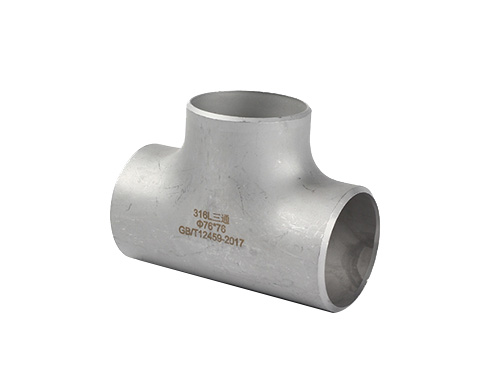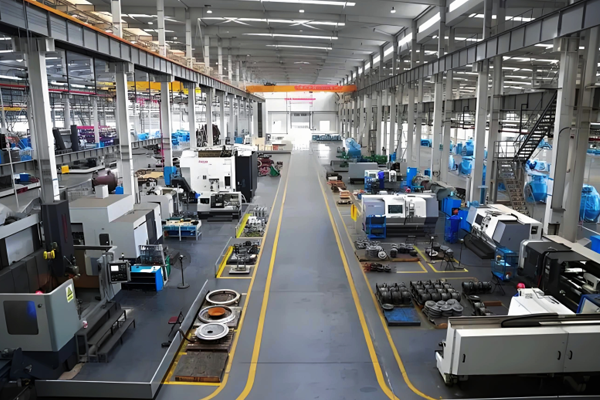
Stainless Steel Tee
Stainless Steel Tee is a T-shaped pipe fitting made of stainless steel, mainly used in pipeline systems to achieve medium diversion (one pipe divided into two pipes) or merging (two pipes combined into one). Compared to carbon steel tees, its outstanding advantage is strong corrosion resistance, suitable for working conditions with strong corrosion, high hygiene requirements, or high temperature and pressure. It is one of the core pipe fittings in industries such as chemical, food, and pharmaceutical. Here is a detailed introduction:
1、 Core characteristics and material classification
The core value of stainless steel tees lies in their corrosion resistance (formed by chromium, nickel and other alloying elements to form a passive film), hygiene (smooth surface, not easy to breed bacteria), and high temperature stability (able to withstand extreme temperatures from -270 ℃ to 800 ℃). Its materials are mainly divided into:
Austenitic stainless steel (most commonly used):
304/304L: Contains 18% chromium and 8% nickel (304L has a carbon content of ≤ 0.03%, better resistance to intergranular corrosion), acid and alkali resistance, oxidation resistance, suitable for moderate corrosion scenarios (such as food processing, drinking water pipelines, and chemical dilute solution transportation).
316/316L: Adding 2-3% molybdenum on top of 304 significantly improves its resistance to chloride ion corrosion, making it suitable for high salt and high humidity environments (such as seawater desalination and coastal pipelines) as well as highly corrosive media (such as nitric acid and sulfuric acid diluents).
321: Contains titanium element, resistant to high temperature oxidation (≤ 800 ℃), suitable for high temperature flue gas and steam pipelines (such as boilers and heat treatment equipment).
Martensitic stainless steel: such as 410, containing 13% chromium and no nickel, with high strength but weak corrosion resistance, suitable for low-pressure, dry, and mildly corrosive scenarios (such as certain mechanical hydraulic systems).
Dual phase stainless steel, such as 2205 (chromium 22%+nickel 5%+molybdenum 3%), combines the corrosion resistance of austenite with the high strength of ferrite, suitable for high-pressure (≥ 20MPa) and highly corrosive environments (such as deep-sea oil and gas pipelines and desulfurization systems).
2、 Structural types and classifications
Similar to carbon steel tees, stainless steel tees are divided according to port size and angle, with the following core types:
1. Divided by port diameter
Straight Stainless Steel Tee: Three ports with the same diameter (such as DN50 × DN50 × DN50), used for diversion/merging of equal diameter pipelines (such as clean water pipeline branches in food factories to ensure even distribution of medium flow).
Reducing Stainless Steel Tee: The diameter of the branch pipe is smaller than that of the main pipe (such as DN100 × DN100 × DN80), and it is suitable for diverting the main pipe to a small-diameter branch pipe (such as the main material pipe of a pharmaceutical factory being led out to the sampling pipeline through a reducing tee), reducing local resistance loss.
2. Divided by molding process
Seamless stainless steel tee: made of seamless stainless steel pipe as raw material, formed by hot pressing or cold pressing (without welds), with high overall strength and good leakage resistance, suitable for high pressure (≥ 10MPa) and high cleanliness scenarios (such as high-purity gas pipelines in the semiconductor industry).
Welded stainless steel tee: made by cutting and welding stainless steel plates, with a lower cost than seamless products. It can be customized with large diameters (such as DN1200 or above), suitable for medium and low pressure, high flow systems (such as feed/discharge branch pipelines for large chemical storage tanks).
3、 Key performance advantages
Corrosion resistance: The chromium oxide film (Cr ₂ O3) on the surface of stainless steel can isolate medium corrosion, especially 316L can withstand strong corrosive environments such as seawater and chemical solvents (while carbon steel is prone to rusting and failure in such scenarios).
Hygiene: Smooth surface (Ra ≤ 0.8 μ m), no pores, not easy to breed bacteria, in compliance with food grade (FDA) and pharmaceutical grade (GMP) standards (such as pipeline branches in dairy production lines).
High/low temperature stability: Austenitic stainless steel (such as 321) can maintain toughness at temperatures ranging from -196 ℃ (liquid nitrogen) to 800 ℃ (high temperature flue gas), making it suitable for extreme temperature conditions (such as merging tees in LNG pipelines).
Long lifespan: Under normal maintenance, the service life can reach 10-30 years (far exceeding the 3-10 years of carbon steel), reducing long-term replacement costs (such as municipal seawater desalination pipelines in coastal areas).

+86-15533769121

Jango

jango@yuntaopiping.com

Beixiaozhuangzi Industrial Zone, Mengcun Hui Autonomous County
Copyright © 2025-2026 http://www.yuntaopiping.com. All Rights Reserved Yuntao Piping Group.,Ltd.Copyright



